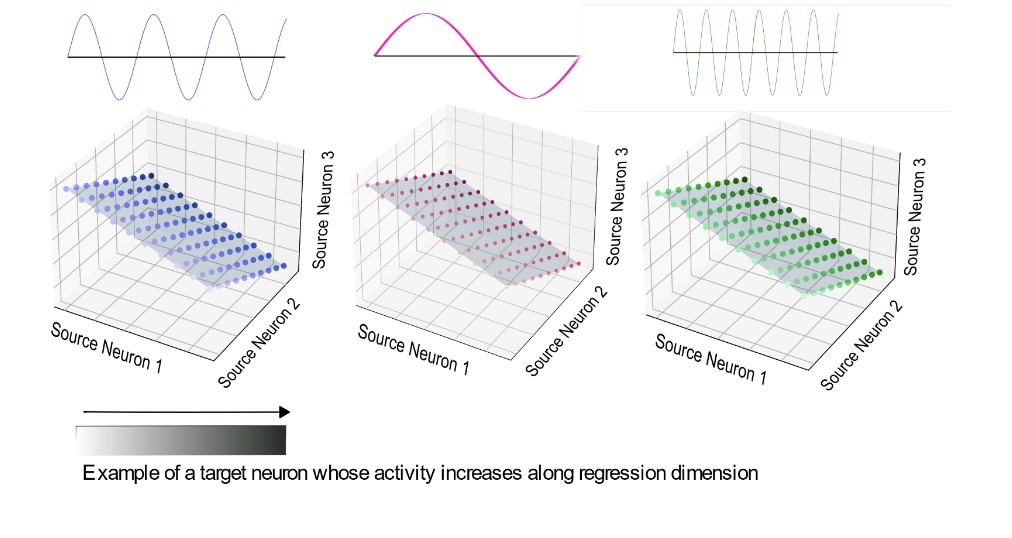Communication Subspaces for Local Field Potential Defined Network States during Hippocampal-Prefrontal Interactions

Abstract
Distributed neural circuits across multiple brain regions coordinate activity and communicate with each other to process information and adapt to an ever-changing environment. The hippocampus (HPC) and prefrontal cortex (PFC) are essential for learning and are thought to work in an integrated fashion to support cognition and memory-guided behavior. How networks of neurons across these regions dynamically communicate with each other to support learning and memory is still not entirely understood. Here, we establish low-dimensional dynamics of spiking activity during distinct hippocampal oscillation patterns such as theta and ripple oscillations, which correspond to broad behavioral states (e.g., movement) and distinct periods of inter- and intra-regional communication. We found the dimensionality of interaction to be differentially modulated by oscillatory activities of varying strengths. Remarkably, inter-areal HPC-PFC communication is significantly lower-dimensional than intra-areal HPC-HPC communication, implying that HPC-PFC interactions is driven by small subsets of neural populations. We further confirmed these communication subspaces to be specific to the ongoing oscillatory pattern, but with similar directionality and correlation with neural firing for all patterns, suggesting an optimized strategy for recruiting covarying cells during HPC-PFC communications. Linking the temporal dynamics of subspace components to behavioral variables revealed that learning can modulate the fluctuation of regional communication structures.
View the poster
- Ziyi Guo, Ryan A. Young, and Shantanu P. Jadhav "Communication Subspaces for Local Field Potential Defined Network States"
Neuroscience PhD candidate in the Johns Hopkins School of Medicine
© 2023 Ziyi Guo